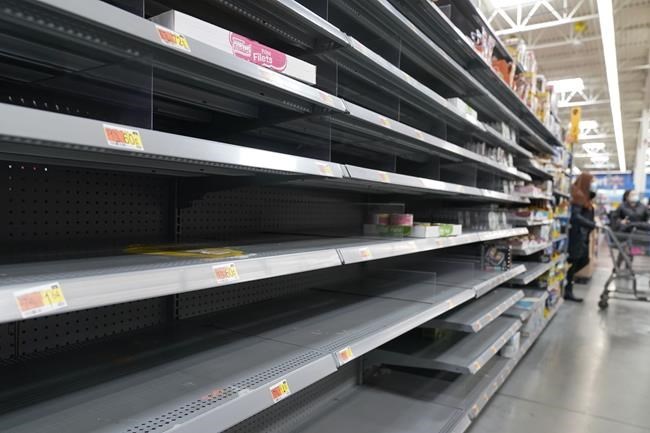sa���ʴ�ý's food manufacturers are cutting capacity and focusing on key products as they confront labour shortages and supply chain bottlenecks that show no signs of easing.
Shipping backlogs, delays in obtaining packaging and ingredients and high worker absenteeism due to COVID-19 isolation protocolsare interfering with the availability of certain products, experts say.
The situation has prompted some food suppliers to inform grocers about the steps they're taking to fulfil orders, including finding new sources for materials, adding transportation capacity and even changing product formulations in some cases.
Shoppers should expect intermittent issues with product availability, said Michael Graydon, CEO of Food, Health & Consumer Products of sa���ʴ�ý.
"There are certain commodities that will come and go and be a bit sporadic," he said. "But the essentials in life will there."
Many food manufacturers are coping with labour and product shortages by concentrating on key product flavours and sizes with the highest demand in order to maximize efficiencies, Graydon said.
Still, others have been forced to reduce production as absenteeism reaches up to 20 per cent in some plants, Graydon said.
"You end up having to cut significant manufacturing capacity because you don't have the labour," he said. "We already have high demand for products because the restaurant industry is virtually down and out and home consumption increased."
Meanwhile, supply chain issues are also impacting the flow of goods, especially over the border.
Shipping problems are delaying the delivery of U.S.-made products to Canadian distribution centres as well as the availability of raw materials like packaging, experts say.
"There's a massive shortage of truck drivers," Graydon said. "Goods aren't moving and the cost of moving those goods is going up."
Compounding the situation is a new federal vaccine mandate for truckers, he said.
"It’s the timing," Graydon said. "This new variant has had a significant impact on absenteeism ... we can't afford to lose more drivers right now."
Sylvain Charlebois, Dalhousie University professor of food distribution and policy, said food access in sa���ʴ�ý will be a challenge for some time.
"There are bottlenecks throughout the supply chain, especially in processing," he said. "That impacts distribution and eventually the ability for grocers to restock shelves."
Consumers will see fewer discounts and products on supermarkets shelves as a result, Charlebois said.
"Promotions are going to be really, really rare," he said. "And shoppers may occasionally notice half-empty shelves."
Meanwhile, the shortage of truckers will make the border less fluid, leading to delays in obtaining both raw ingredients and finished products, Charlebois said.
Av Maharaj, chief administrative officer for Kraft Heinz sa���ʴ�ý, said his company is not immune to the current supply chain challenges across the food industry.
Shipping costs have gone up dramatically and there is a scarcity of certain raw materials, he said.
Still, Maharaj said Kraft Heinz’s facility outside of Montreal has rigorous safety protocols in place and low absenteeism, allowing it to operate at full production.
“The factory continues to run at a maximum capacity to meet demands of Canadian consumers,” he said.
Lores Tomé, a spokesperson for Kellogg sa���ʴ�ý Inc., said higher at-home consumption coupled with supply chain challenges have impacted the availability of some products in sa���ʴ�ý, such as Kellogg’s Rice Krispies cereal.
These “intermittent shortages” reflect the challenging operating environment all manufacturers are experiencing, she said in an e-mailed statement.
About 1,400 union workers at Kellogg’s plants in the United States were on strike for several weeks last year. An agreement was reached Dec. 21.
This report by The Canadian Press was first published Jan. 19, 2022.
Brett Bundale, The Canadian Press



